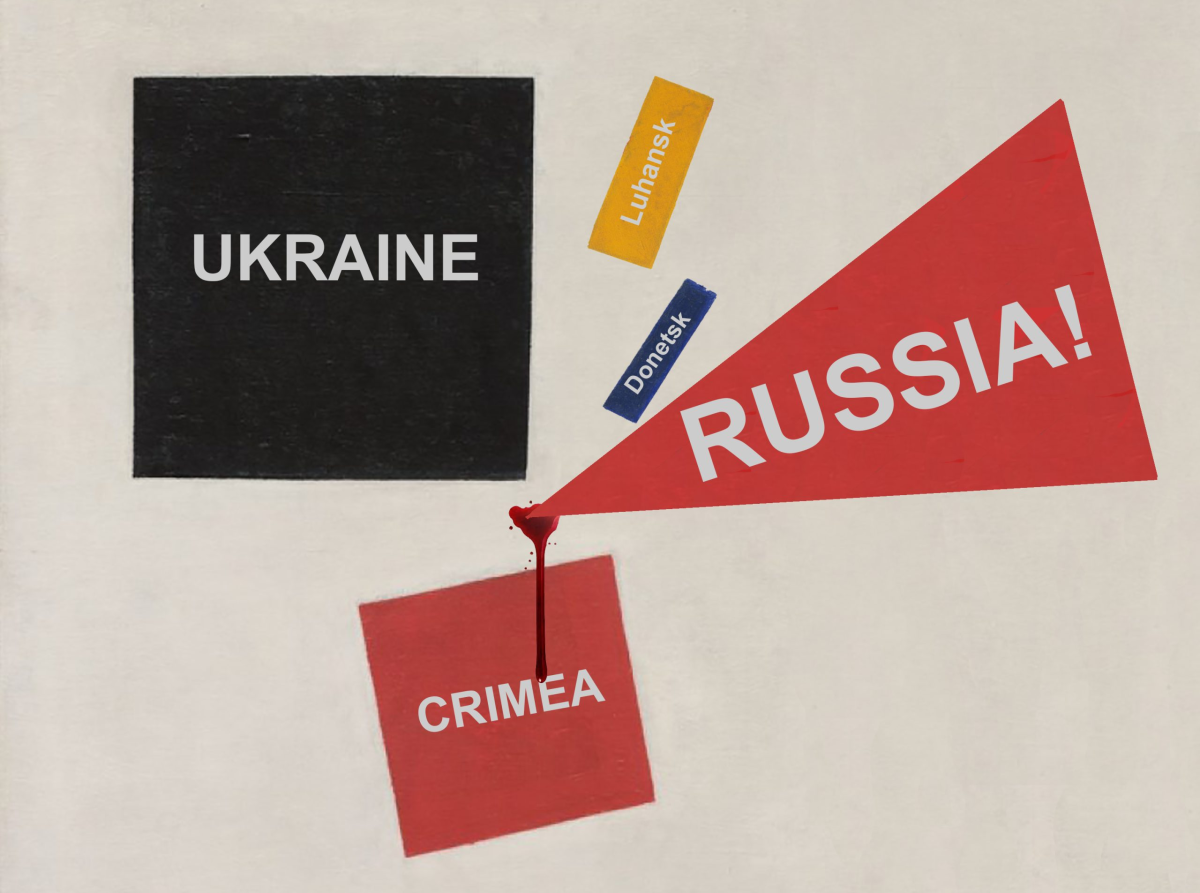I was writing this article early on Friday morning in a safe place in Western Ukraine right at the time when Russian tanks with thermal imagers were shooting at the Zaporizhya nuclear power station, threatening nuclear catastrophe to the entire world.
At the same time, I was trying to come up with the right words to answer an email from Marion Dubois-Daras, the Head of Administration at La Semaine de la Critique. In her letter to me, she sent a communiqué from the parallel sections of the Cannes Film Festival that express “their solidarity for the Ukrainian people, fighting today for their freedom.” This welcome assurance of support comes in two small paragraphs — whereas the other four paragraphs are about Russian filmmakers.
Earlier this week, the main press office of the Cannes Film Festival issued its own statement. “Our thoughts go out in particular to the Ukrainian artists and film industry professionals,” it says. But then the statement continues: “However, we would like to salute the courage of all those in Russia who have taken risks to protest against the assault and invasion of Ukraine. Among them are artists and film professionals who have never ceased to fight against the contemporary regime, who cannot be associated with these unbearable actions, and those who are bombing Ukraine.” This year, the festival promises, there will be no official Russian delegation in Cannes. The films, however, will stay, at least in parallel sections: “We will continue to receive and consider films from all filmmakers regardless of their nationality.”
However, I can hardly imagine that any Ukrainian film will be shown in Cannes next to a Russian one. Lots of Ukrainian film professionals are now at war, either fighting within the army or filming the new life we all have. Unlike Russian colleagues, they are not able to finish their films that could possibly be shown in Cannes. They took their children to safe places and returned to Ukraine to do what was needed. The Cannes Film Festival doesn’t salute that courage, only the courage of the protesting Russians. Why?
Russian culture has been present, presented, and celebrated in the West for a long time. Soviet accomplishments were and are seen as Russian only — after 1991, Russia became the heiress of the most important physical or symbolic Soviet heritage. In the media mainstream, few can discern whether an artwork was created in the Ukrainian, Georgian, Estonian, or the Russian Soviet Socialist Republic — it just seems, to the general public, like Soviet art and therefore Russian. In Ukraine over the last 8 years (since the war started in 2014), there has been an important discussion about our Soviet heritage (especially architecture and mosaics, since they were in the public). Russia took no part in this conversation, continuing to appropriate artists with diverse backgrounds, calling them “Russian” — with the Western media accepting the narrative. The works of artists Oleksandra Ekster, David Burliuk, Kazimir Malevich and others, regardless of their background, are united under the common name “Russian avant-garde,” and with big exhibitions like one in the Museum of Modern Art in 2017 that reinforce that perception, this status quo is being kept.
The “Great Russian Culture” everyone is referring to today is great precisely because of its diverse representatives from Ukraine and other communities, captured throughout Russia’s imperial history. So today the conversation about Western stances on Russian culture simply demands post-colonial optics. The Russian state has attempted to silence all inconvenient voices except its own for centuries. Historian Mayhill C. Fowler explores the dynamic between the center (Moscow) and the Ukrainian periphery in 1920s and 1930s theatre. In her Beau Monde on Empire’s Edge: State and Stage in Soviet Ukraine, she shows that the Soviet system of supporting culture first provided resources for national art beyond the center, but then the center oppressed it, which resulted in the physical disappearances of prominent Ukrainian cultural figures of that time. Since then, to make a career in the artistic field was way easier in the center than in one’s native city or republic, with Moscow dictating its rules and narratives and not tolerating dissent. In Ukraine, this trend thrived at least till 2013, just before the Russian invasion of Crimea.

In 2022, Russian artists and filmmakers who prospered in this environment for ages and never questioned it are being saluted for signing open letters and risking participating in anti-war protests (too late, I might add, and not big enough, but still necessary). Of course, they risk being detained and have spent a long time in prison. But Putin’s regime was not built yesterday. So, by benefitting from the privileges that the Russian state provided to its culture and culture makers, aren’t they at the same time complicit in this evil machine that Russia became?
In a way, Russian culture has never stopped being imperial, fixated on centers (have you ever heard of decentralization in Russia? No, right?), and almost never supporting peripheries. It seems that culturemakers in Russia never asked themselves where anything came from, including funding, museum objects, worldwide accolades, and big international projects that seemed so easy to produce and promote.
Here is an Instagram post of one of the biggest museums in the world, the Hermitage. “Red silk, silver and gilded thread embroidery on cloth, Ukraine, 18–19 century,” says the post. Some may interpret it as the gesture of supporting Ukraine (“good” Russians interpret it in this way), some as an imperial jeer, because neither the provenance of the embroidered cloth nor the context of this post is clear.
As Ariella Azoulay states, traditional museums are the agents of colonization. “It is not possible to decolonize the museum without decolonizing the world. It doesn’t mean that we shouldn’t engage with this important work, but we have to do so with the full awareness that decolonization cannot be limited to discrete objects, museums, or archives, and cannot be substantial as long as the people from whom all this wealth was expropriated are not allowed to lead the process,” she explains in an interview to Guernica.
Continuing Azoulay’s line of thought, photographing the embroidered piece, perhaps brought to the museum by a private collector or gifted to the Russian Royal family by the representative of the so-called periphery, is the second act of colonization; and the vague Instagram post is the third one. How many colonizing gestures are required to start a post-colonial conversation about the Russian and Ukrainian relationship in culture?
The embroidery presented by the Hermitage is rooted in Ukrainian traditions and experience, but still is being presented as a thing whose value is defined by the museum that stores and displays it. The lack of context provided by the Hermitage gives a lot of space for insensitive imperial speculations. But the main questions here remain unanswered: Where did the museum get the piece, how big is the collection of objects from Ukraine, and why boast of it now?
I showed this piece to a museum expert in Ukraine, and she found it difficult to describe: Perhaps, she thought, there might be another layer of cultural appropriation — among the Russian nobility it was popular to embroider in a so-called “Little Russian” manner. “Little Russian” was the condescending imperial term for the Ukrainian lands.
All of us in cultural institutions or fields should recognize the postcoloniality in the Russian-Ukrainian relationship. Ukraine has started this already, proposing its culture, art, and heritage for the world to explore, and opening this door to other underrepresented “peripheries.” It is a hard task: The priority is always given to Russian culture actors, just as we see in the letter from the Cannes Film Festival.
“Dear Marion,” I wrote that night, after a week of the full-scale devastating war in my country; after a week that changed people’s lives forever; after a week of bombing my hometown and other big and small cities’ residential areas, “With all due respect, it is the most toothless statement I’ve read in my life. Festival de Cannes is more strict to women that cannot wear heels at the red carpet than it is to the country that kills innocent people. A lot of Russian films are made with dirty money, being the state funding or other, private sources. The privileged Russian filmmakers, with all their letters of support, are implicated in what’s happening right now and should be held responsible, once in their whole life.”
The article was originally published in Hyperallergic in March 2022.





